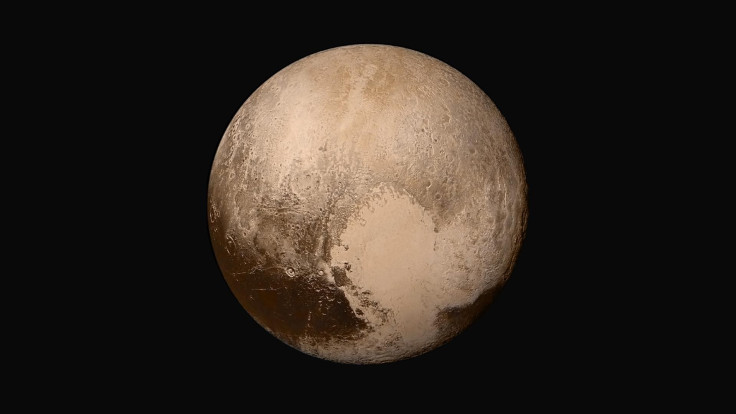What Is A Cryovolcano? Mystery Of Liquid Water On Frozen Pluto Revealed

For centuries, the dwarf planet Pluto has captivated scientists with its reddish ice and now the possibility of a liquid ocean has got everyone excited. Liquid water is one of the key ingredients to sustain life.
A new study revealed that liquid water on Pluto could be the product of a violent eruption of a cryovolcano, an ice volcano. A cryovolcano erupts volatiles such as water, ammonia or methane instead of molten rock. The researchers revealed that when ammonia lowers the freezing point of water, it allows liquid water to exist in Pluto ’s freezing temperatures. Scientists say cryovolcanoes form on icy moons and on low-temperature astronomical objects such as Kuiper belt objects.
The research team used data from NASA ’s 2015 New Horizons Mission and were able to see what chemical compounds are likely to be located on Pluto’s surface by analyzing the wavelengths of light in the images of the dwarf planet’s surface.
Cristina Dalle Ore, a planetary scientist at NASA ’s Ames Research Centre in Moffett Field, told Space.com, said ammonia was already mixed in with water when it got deposited on Pluto’s surface. Dalle Ore explained that the water may have found its way out through cracks or vents and was sprayed on the surface.
“We call this cryovolcanism,” Dalle Ore, who is also the lead author of the study, said the presence of ammonia in water makes it possible for a liquid ocean to exist under the icy crust of the dwarf planet. “But the extent of this ocean remains unknown, it may consist of only a few pockets of liquid water, or it may constitute a watery layer under the entire surface of Pluto,” Dalle Ore said.
Co-author and planetary scientist Dale Cruikshank said they were surprised by the findings. “It means there are lots of surprises waiting to be uncovered in that part of the solar system.” Cruikshank explained the Pluto has a frigid surface temperature. “But the compound of nitrogen and hydrogen acts as an antifreeze. It lowers the freezing point of water by up to 100 degrees Celsius and allows the water to remain in liquid form.”
Japanese astronomers told Science Alert that a layer of gas under the ice and above the liquid, insulating the two from each other, allows them to coexist. The astronomers said it could even solve the gravity anomaly which was detected by the New Horizons Mission in the form of Sputnik Planitia, which resembles a polar ice cap.
A research team from University of California had earlier said the clue behind the liquid water could be the "extra layer" between the ocean and the shell. Francis Nimmo, a researcher said the layer would be made from a gas hydrate, which occurs when gas molecules get trapped between frozen water molecules. “It's not bubbles, it's a little microscopic cage for keeping gas atoms. It doesn’t look very different from regular ice, but it's got all that gas in there.”
© Copyright IBTimes 2025. All rights reserved.





















